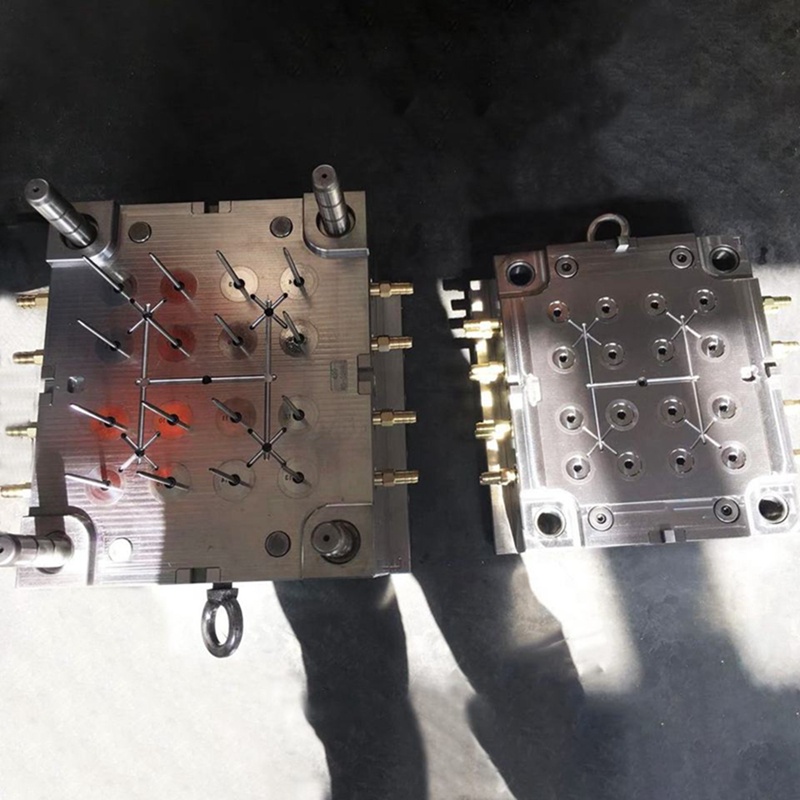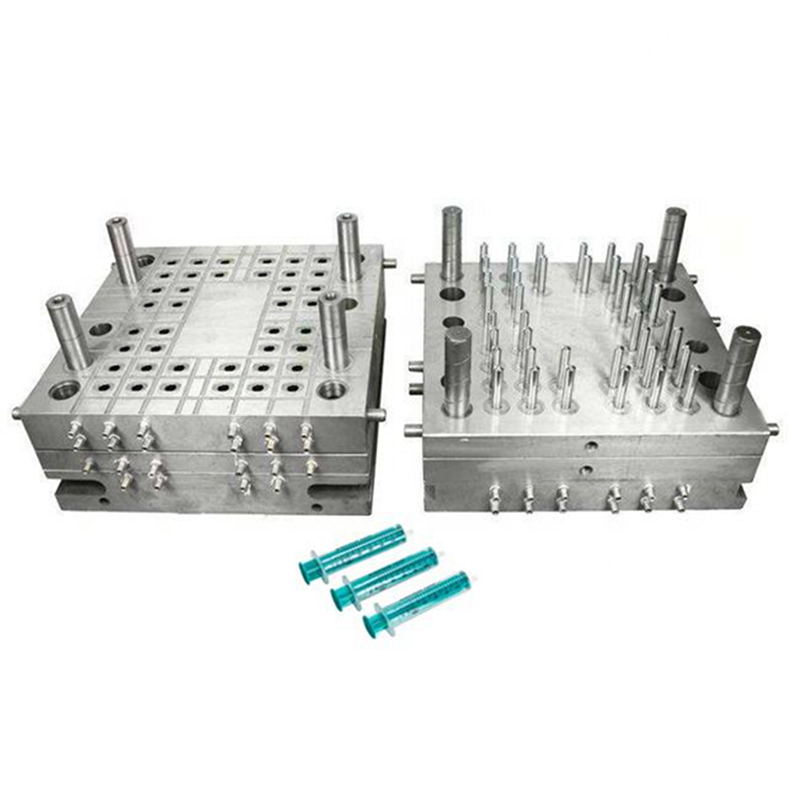Introduction to OEM Plastic Injection Moulding
Original Equipment Manufacturer (OEM) plastic injection moulding is a versatile, efficient, and widespread method of manufacturing. It is a process in which molten plastic is injected into a mould to create components of various shapes and sizes. The versatility of this process comes from its ability to produce high volumes of the same part with high precision and repeatability.

Over the years, the use of OEM plastic injection moulding has grown exponentially. Industries ranging from automotive to healthcare, electronics to toys, utilize this method to produce parts and components. The reason for its extensive use lies in its ability to manufacture complex geometries at a low cost.
While the process itself is critical, the choice of material used in the moulding process is equally important. The selection of the right material can significantly impact the functionality, quality, and cost-effectiveness of the final product. This leads us to the next section: understanding what OEM plastic injection moulding parts materials are.
What are OEM Plastic Injection Moulding Parts Materials?
OEM plastic injection moulding parts materials refer to the types of plastic used in the moulding process. These materials are chosen based on their properties, such as strength, flexibility, resistance to heat and chemicals, and cost. The choice of material is critical as it directly influences the performance and durability of the final product.
The variety of plastic materials available for injection moulding is vast. From thermosetting plastics that solidify permanently once moulded to thermoplastics that can be remoulded and recycled, the options are many. Each material has its unique set of characteristics and is suitable for specific applications.
For instance, Polyethylene (PE) is known for its high durability and low cost, making it suitable for packaging, containers, and pipes. On the other hand, Polycarbonate (PC) is recognized for its high impact strength and transparency, making it ideal for applications like eyewear and medical devices.
The Importance of Choosing the Right Material for Plastic Injection Moulding
The selection of the right material for plastic injection moulding is a critical step in the manufacturing process. The type of material chosen impacts not just the physical and chemical properties of the final product but also its aesthetic appeal, longevity, and the overall cost of production.
Firstly, different materials have different melting points. The choice of material will determine the temperature at which the plastic needs to be heated for moulding. This, in turn, affects the energy consumption and cost of the process.
Secondly, materials vary in terms of their strength, stiffness, flexibility, and resistance to heat, chemicals, and UV radiation. These characteristics play a significant role in determining the functionality and durability of the final product. For instance, a part that needs to withstand high temperatures or harsh chemicals will require a material with high heat and chemical resistance.
Lastly, the choice of material also influences the aesthetics of the final product. Factors such as colour, transparency, and surface finish are all dependent on the type of plastic used.
Different Types of OEM Plastic Injection Moulding Parts Materials
There is a wide range of materials available for OEM plastic injection moulding. These can broadly be classified into two categories: thermoplastics and thermosetting plastics.
Thermoplastics are materials that can be melted, shaped, cooled, and then remelted without significant degradation. This makes them highly recyclable. Common thermoplastics include Polyethylene (PE), Polypropylene (PP), and Polystyrene (PS).
Thermosetting plastics, on the other hand, undergo a chemical change when heated and moulded. This change is irreversible, meaning they cannot be remelted or reshaped. Examples of thermosetting plastics include Epoxy, Phenolic, and Melamine.
Other types of materials used in injection moulding include elastomers, which are highly flexible materials, and thermoplastic elastomers, which combine the properties of thermoplastics and elastomers.
Factors to Consider When Selecting OEM Plastic Injection Moulding Parts Materials
Selecting the right material for OEM plastic injection moulding involves considering several factors. The intended use of the final product is, of course, a critical factor. The environmental conditions it will be exposed to, the level of stress it will endure, and the desired aesthetics are all important considerations.
Moreover, the material’s properties, such as its strength, flexibility, heat and chemical resistance, and cost, need to be evaluated. The material’s recyclability may also be a significant factor, especially in today’s increasingly eco-conscious world.
Lastly, it’s essential to consider the moulding process itself. Different materials have different melting points, flow rates, and cooling times. These factors can impact the efficiency and cost-effectiveness of the production process.
The Role of OEM Plastic Injection Moulding Parts Materials in Product Quality
The quality of a product manufactured using OEM plastic injection moulding is heavily influenced by the material used. The choice of material dictates the product’s physical and chemical properties, its durability, and its ability to meet the intended use’s requirements.
A material’s strength, for instance, will determine the product’s ability to withstand physical stress. Its heat resistance will dictate whether it can endure high temperatures. Its chemical resistance will decide if it can resist degradation due to exposure to certain chemicals.
Furthermore, the material’s aesthetic qualities, such as its colour and transparency, can significantly impact the product’s appeal to consumers. Thus, choosing the right material is critical to ensuring the quality of the final product.
How OEM Plastic Injection Moulding Parts Materials Impact Manufacturing Process
The choice of material for OEM plastic injection moulding not only affects the final product’s properties but also impacts the manufacturing process itself.
Different materials have different melting points, meaning they require different amounts of heat to be moulded. The energy consumption and the time taken for the moulding process can thus be significantly influenced by the choice of material.
Moreover, materials vary in terms of their flow rates. Some materials flow easily when melted, while others are more viscous. This can affect the mould filling process, which in turn can impact the quality of the moulded part.
Also, materials differ in their cooling times. Some materials cool and solidify quickly, while others take longer. This can affect the cycle time of the moulding process and, therefore, the production rate.
Case Study: Successful Use of OEM Plastic Injection Moulding Parts Materials
There are numerous examples of successful use of OEM plastic injection moulding parts materials. One such example is the manufacturing of automotive components.
Automotive manufacturers often use ABS (Acrylonitrile Butadiene Styrene) for producing various parts like dashboards, wheel covers, and body parts. ABS is known for its high impact resistance, excellent dimensional stability, and good aesthetic qualities. It is also relatively easy to mould, making it a cost-effective choice.
By choosing ABS, automotive manufacturers can produce durable, high-quality components that meet both functional and aesthetic requirements, demonstrating the importance of selecting the right material for plastic injection moulding.
Where to Source Quality OEM Plastic Injection Moulding Parts Materials
Sourcing quality OEM plastic injection moulding parts materials is critical to ensuring the success of the manufacturing process. There are several reputable suppliers worldwide that provide a wide range of materials to choose from.
When selecting a supplier, it’s important to consider factors such as the variety of materials they offer, their quality assurance procedures, and their technical support. It’s also advisable to look for suppliers that are committed to sustainable practices.
Conclusion: The Future of OEM Plastic Injection Moulding Parts Materials
The future of OEM plastic injection moulding parts materials looks promising. With ongoing advancements in material science, new materials with improved properties are continually being developed. These materials are not only more durable and functional but also more sustainable.
There is also a growing emphasis on recyclability in the plastic industry. More and more manufacturers are opting for recyclable materials to reduce their environmental impact. This trend is expected to continue in the future, further shaping the landscape of OEM plastic injection moulding parts materials.
In conclusion, understanding the importance of OEM plastic injection moulding parts materials is crucial for anyone involved in the manufacturing industry. The choice of material has a profound impact on the product’s quality, the manufacturing process’s efficiency, and the overall success of the manufacturing venture.
Related Products














